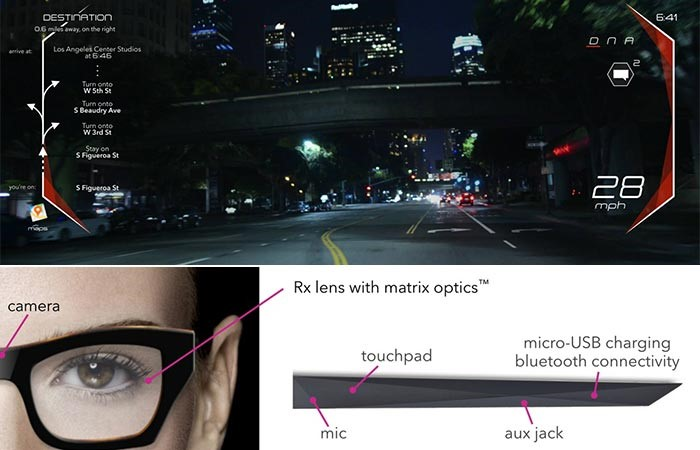AR – A practical device
That said, we have seen a simple AR product that seems to actually be helpful to the consumer, at a ‘reasonable’ price, and doesn’t make the user look like someone wearing a pair of x-ray specs from the 1950’s. A small company in San Mateo is developing an AR product line that overlays video content from an iOS or Android smartphone to the glasses, which look like regular glasses that would be typically worn by ordinary folk.
The glasses work by projecting an image on the side frame of the glasses, which is bounced through an embedded prism onto the user’s retina. This image floats in front of the wearer and stays in focus regardless of the direction of view. While details are still meager, the first and second versions will produce a 200 x 400 (possibly 480) pixel image to the right eye, while the third version will have dual eye images. The glasses connect to other devices via Blue tooth and can last up to 18 hours before charging, using three axis sensors, an accelerometer and a magnetometer along with a temperature sensor and ambient light sensor. Five button on the frames allow the user to work through menus and notifications, although when the glasses detect a speed over 17 mph, all notifications are turned off., and at no time are videos able to be played on the glasses, as they are considered a dangerous distraction.
The supplier, LaForge Optical (pvt) will give users the option of having their prescription built into the lenses at no cost and a few early versions have been shipped with current orders being scheduled for 2Q delivery. The cost for the initial units is $590 and the 2nd generation, which is expected to ship later this year will be supplied for free for those who place orders now. In light of full disclosure, we have no affiliation whatsoever with this company or the product, we just thought it was an interesting application of a technology that has a tendency to be overhyped and over-engineered.
User video here: https://www.laforgeoptical.com/video/original-beta_6.mp4


 RSS Feed
RSS Feed